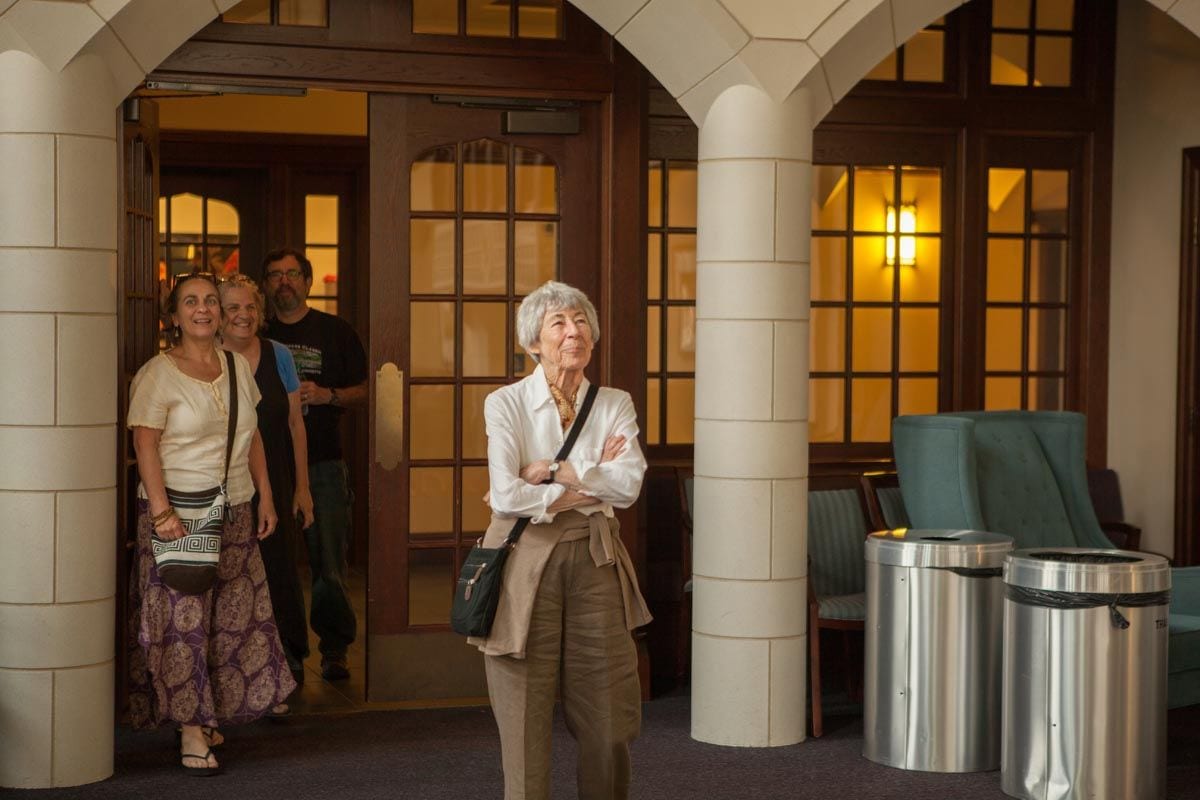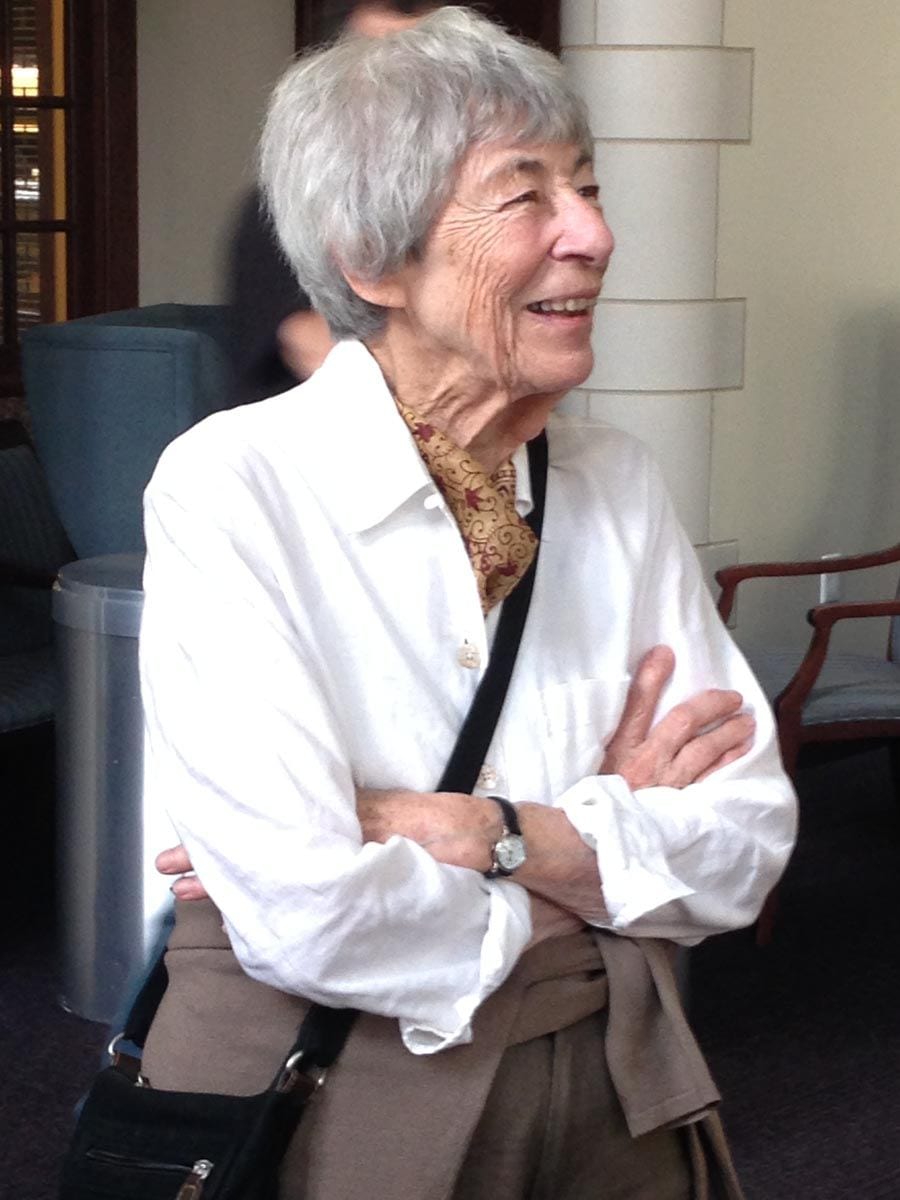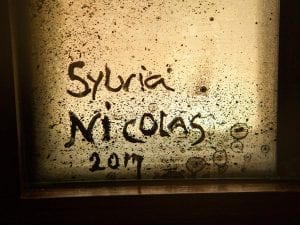About the artist: Sylvia Nicolas ’01Hon.

By Vicki-Ann Downing
Sylvia Nicolas ’01Hon., a master stained-glass and sculpture artist, created the 45 stained-glass windows in St. Dominic Chapel, which was dedicated in 2001. She also produced several sculptural works for the chapel, including the six-foot crucifix that hangs above the altar and the Stations of the Cross.
“In designing the crucifix, I thought of the Romanesque Spanish crosses that St. Dominic would have knelt before in the 13th century,” Sylvia wrote in the book, A Dream Realized: St. Dominic Chapel at Providence College. “It was important to me that the cross and the (body of Christ) be of the same material and be molded as one.”
The crucifix and the stations are made from bonded bronze, a fiberglass material that emulates the color and patina of bronze, but is lighter in weight.
The College awarded Sylvia an honorary doctor of fine arts degree the year the chapel was completed. In 2010, she exhibited her work in a variety of media at the Reilly Gallery in the Smith Center for the Arts.
In 2013, when the Ruane Center for the Humanities was built, Sylvia was commissioned to create the life-size bronze statue of St. Thomas Aquinas that stands outside the connector linking the Ruane Center to Phillips Memorial Library.
Sylvia is a fourth-generation stained-glass artist. Born in the Netherlands, she emigrated to New York with her family in 1939 to escape World War II. Her father, Joep Nicolas, is considered “the father of modern stained-glass.” He worked in a studio in Roermond, Holland, that was founded by his grandfather in 1855. He returned to Holland in the early 1950s to repair war-damaged cathedral windows. His stained-glass windows have graced many cathedrals and churches in the United States for decades.
Sylvia learned the art from him in 1954, when she was pregnant with her son, Diego Semprun Nicolas, who is a fifth-generation Nicolas family stained-glass artist. She worked alongside her father for many years and, in fact, completed his final commission, 13 windows for the Church of St. Pancratius in Tubbergen, the Netherlands. The church already held windows created by her great-grandfather, grandfather, father, and cousin. It now has windows made by Diego Semprun Nicolas as well.

As a young artist, Sylvia was interested in costume design. She attended Lycée Francais and the Dalton School in New York, the German Institute in Rome, and the Institut des Hautes Etudes Cinematographiques and the Académie de la Grande Chaumiére, both in Paris. She studied with painter Rufino Tamayo and sculptor Ossip Zadkine in New York.
She has traveled extensively in Italy, Germany, France, Belgium, Iceland, and the United States.

She also is an accomplished sculptor, as was her mother, Suzanne Nys Nicolas, a native of Belgium. Sylvia has created many large-scale statues in bronze or fiberglass, including statues of St. Anselm and St. Benedict for Saint Anselm College in Manchester, N.H.; Mary, Mother of the Church, for Stonehill College in Easton, Mass.; and a statue of Blessed Anne Marie Rivier at Rivier University in Nashua, N.H.
She received commissions for stained-glass work at the Church of the Annunciation in Washington, D.C., and at St. John’s University in Queens, N.Y., among other places. She continues to serve as a senior adviser to the American Glass Guild. She also is an accomplished painter and mosaicist.
Since 1968, she has lived in Mont Vernon, N.H., locating her studio in a farmhouse and barn dating to the 19th century.
On her website, www.sylvianicolas.com, she writes:
“Foremost, it is people I am concerned with, in whatever context. I’m a storyteller, really. … I feel very much in tune with the history of civilization that is interwoven in this constant fabric of which I am living and of which I am a part. … I would like to be remembered for my humanity.”





